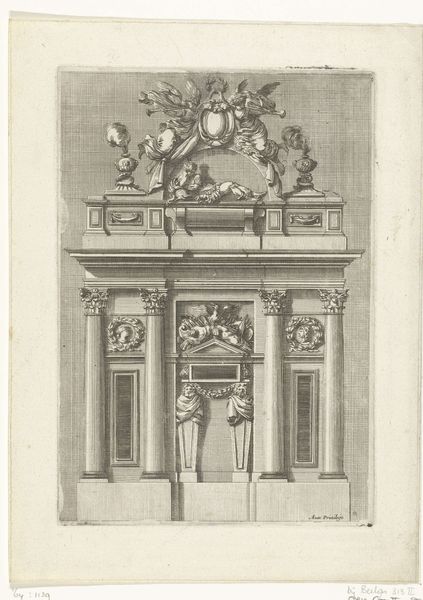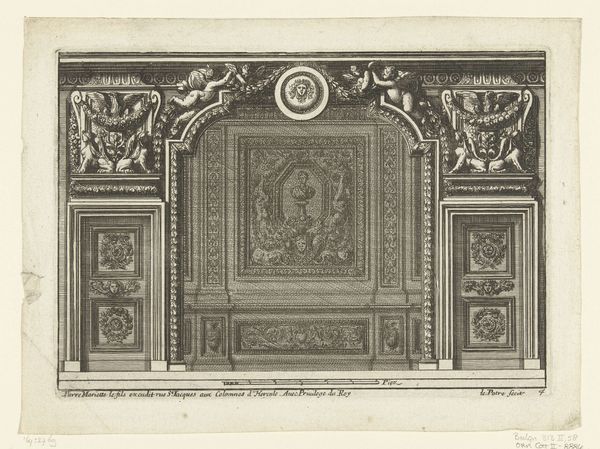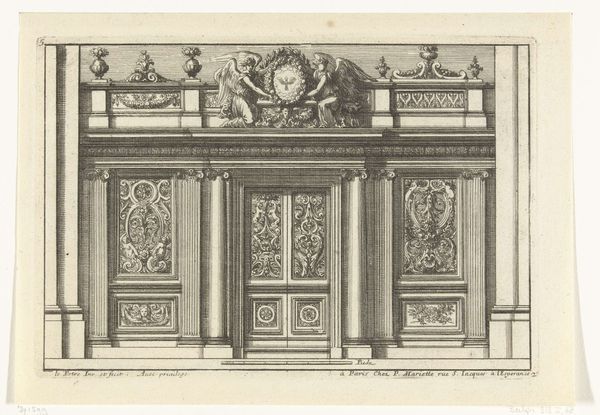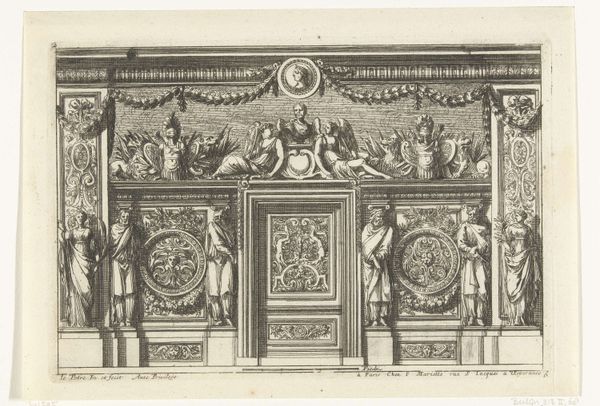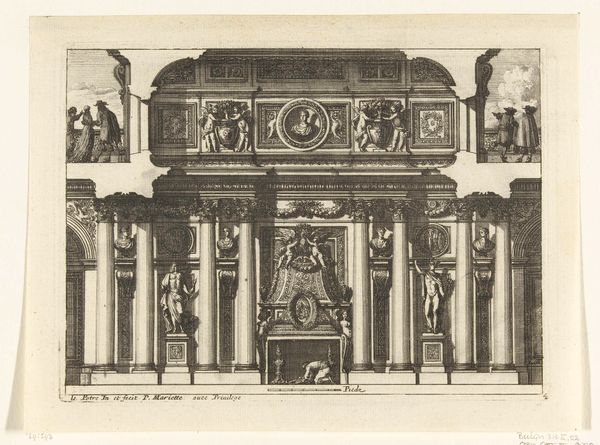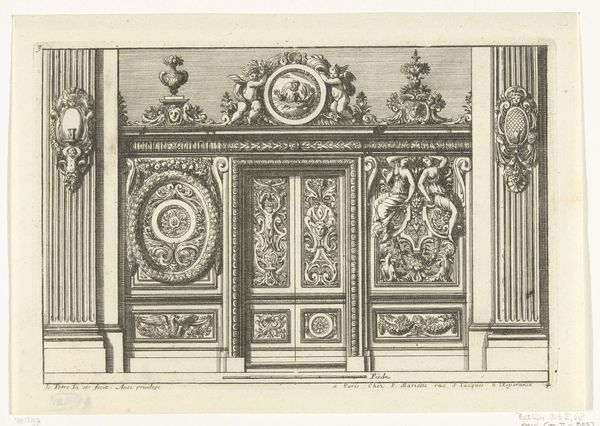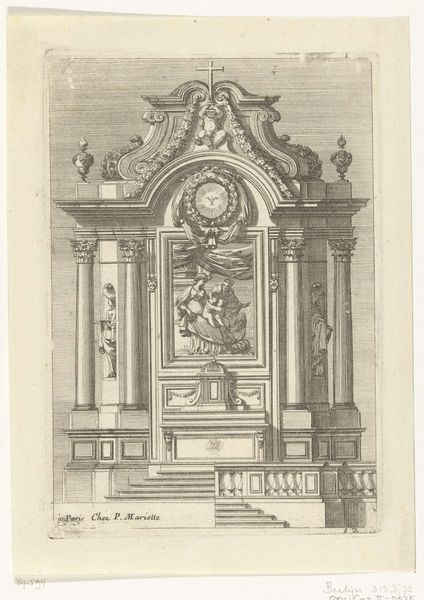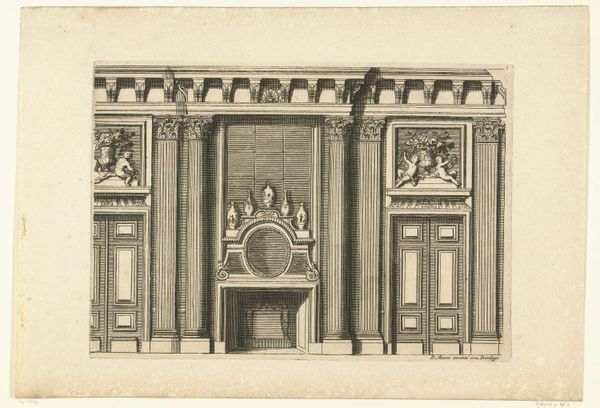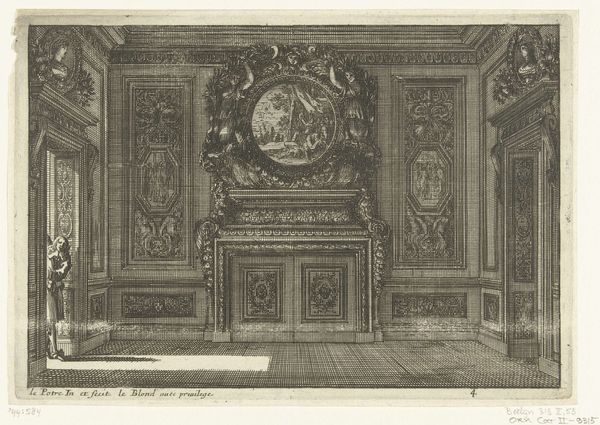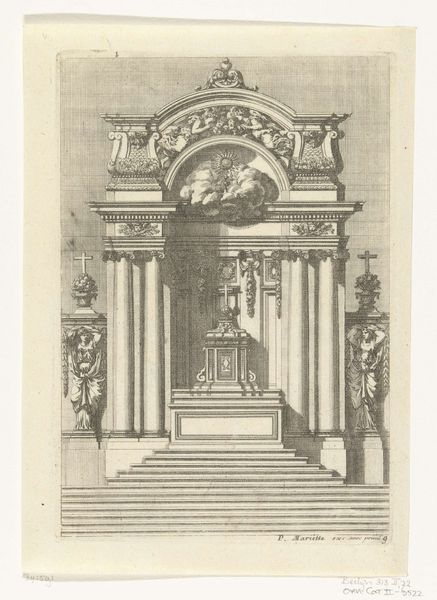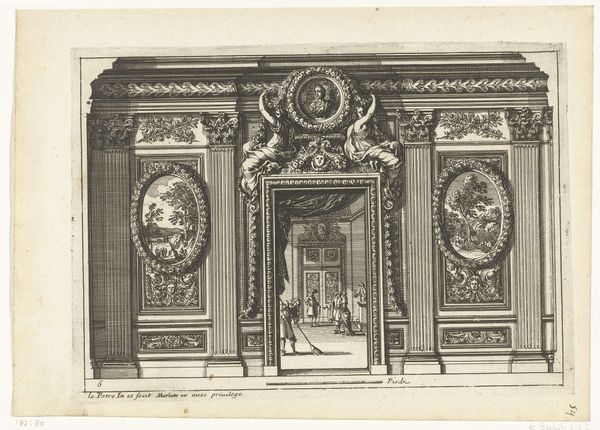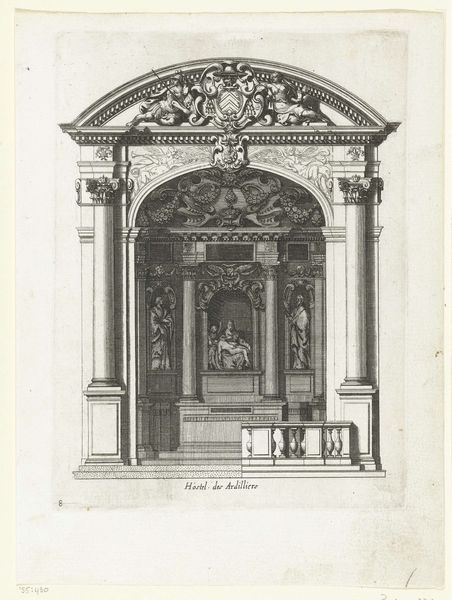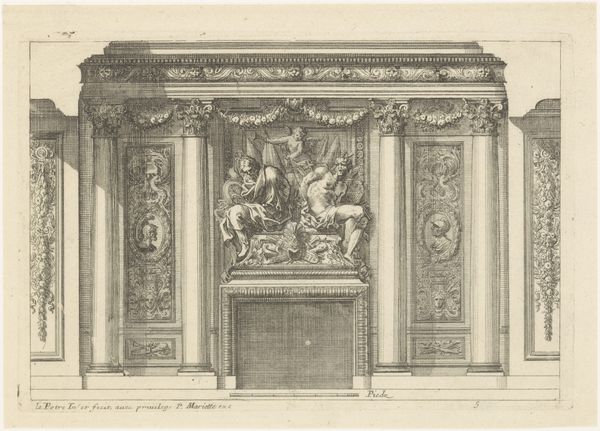
drawing, print, etching, engraving, architecture
#
drawing
#
baroque
# print
#
etching
#
etching
#
line
#
engraving
#
architecture
Dimensions: height 142 mm, width 210 mm
Copyright: Rijks Museum: Open Domain
Editor: Here we have Jean Lepautre’s "Muur met standbeeld van Franse koning," a drawing, etching and engraving from around 1655-1657. I’m really struck by how this print captures the grandeur and aspiration of power. What do you see in this piece? Curator: This print offers a fascinating glimpse into the visual language of power in 17th-century France. Consider the strategic deployment of classical motifs – the columns, the royal statue – designed to evoke the authority and legitimacy of the French monarchy, and of course, the Baroque style! This wasn't merely decoration; it was a deliberate projection of power within a highly codified system. Editor: So it's like visual propaganda? How would prints like this be used? Curator: Exactly! Prints like these served a vital public role. They were disseminated widely, allowing the royal image and associated symbolism to permeate different levels of society. This print is both promotional and instructional – a way of showcasing the aesthetic and political ideals the monarchy sought to promote. The control of imagery was crucial to political dominance, and to influence opinion on royal initiatives, shaping public memory of the reign. Does the detail "A Paris Chez Pierre Mariette..." suggest anything to you? Editor: Right, it was made for distribution! I hadn't considered it so literally before. It really puts the artistry in perspective. I appreciate learning to recognize the role that art played in establishing cultural identity. Curator: Absolutely. Reflecting on the way these images circulated enriches our understanding of 17th-century power structures and public perception, adding nuance to how we think about art history.
Comments
No comments
Be the first to comment and join the conversation on the ultimate creative platform.
